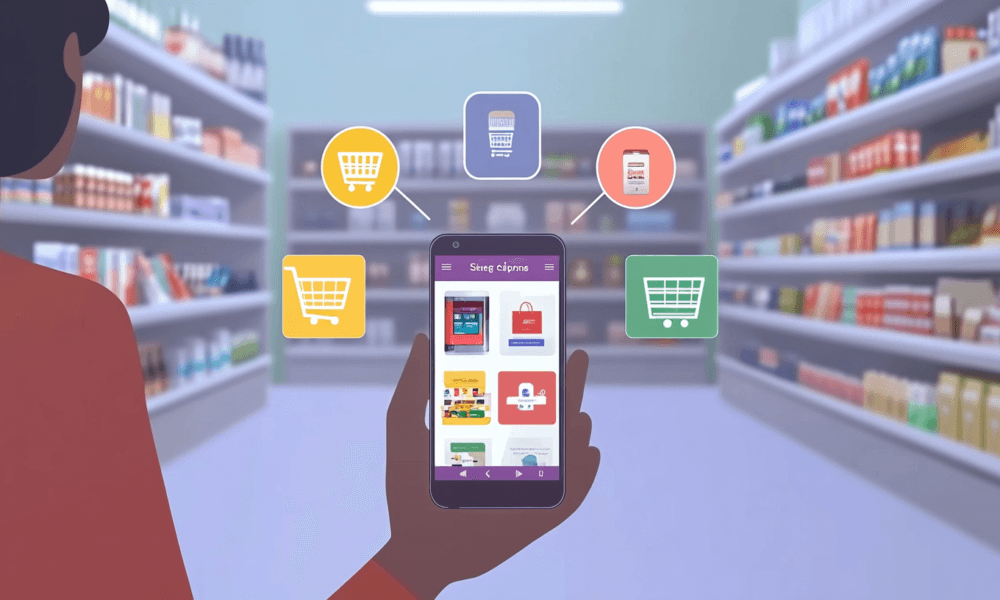The Future of E-commerce
The e-commerce landscape is constantly evolving, and the future holds immense promise for businesses and consumers alike. With the rapid advancement of technology, changes in consumer behavior, and the increasing reliance on digital platforms, the e-commerce industry is poised for significant transformation. Key trends shaping the future of e-commerce include mobile shopping, social commerce, and the integration of cutting-edge technologies like augmented reality (AR) and virtual reality (VR). In this comprehensive article, we will explore these trends in detail and discuss how they are transforming the world of online shopping.
The Rise of Mobile Shopping
1. The Dominance of Mobile Commerce (M-commerce)
Mobile commerce (m-commerce) refers to the buying and selling of goods and services through mobile devices. With the increasing penetration of smartphones and the widespread availability of high-speed internet, mobile shopping has become a dominant force in the e-commerce industry.
- Mobile-Friendly Websites: Consumers expect seamless experiences on their mobile devices. Businesses that prioritize mobile-friendly websites and responsive design are more likely to attract and retain customers.
- Shopping Apps: Shopping apps have become an essential part of the m-commerce ecosystem. Retailers are increasingly investing in mobile apps to provide personalized shopping experiences, exclusive deals, and easy navigation.
- Convenience: Mobile shopping offers unmatched convenience, allowing consumers to browse, compare, and purchase products from anywhere, at any time.
2. The Impact of Mobile Payment Solutions
Mobile payment solutions have revolutionized the way consumers complete transactions online. Digital wallets such as Apple Pay, Google Pay, and Samsung Pay offer secure and convenient payment options that make the checkout process smoother.
- One-Click Payments: Mobile payment solutions enable one-click payments, reducing friction at the point of purchase and improving conversion rates for e-commerce businesses.
- Increased Security: With advancements in biometric authentication, mobile payments have become more secure, giving consumers confidence when making purchases online.
Social Commerce: Blending Social Media and Online Shopping
1. The Emergence of Social Commerce
Social commerce is the integration of e-commerce into social media platforms, allowing users to purchase products directly through social networks like Instagram, Facebook, TikTok, and Pinterest. Social commerce is transforming the way people discover and buy products online.
- Influencer Marketing: Influencer marketing plays a crucial role in social commerce. Influencers have the power to shape consumer preferences and drive sales by showcasing products and sharing their experiences.
- Shoppable Posts: Social platforms now offer shoppable posts that enable users to click on products featured in images or videos and make purchases without leaving the app.
- User-Generated Content (UGC): UGC is a powerful tool for social commerce. Consumers trust recommendations from real people, and user-generated content helps build credibility and drive engagement.
2. Live Streaming and Interactive Shopping
Live streaming has become an important component of social commerce, especially in markets like China, where live shopping events are immensely popular. Live streaming allows consumers to interact with sellers in real-time and make purchases during the broadcast.
- Real-Time Engagement: Live streaming provides a high level of engagement, allowing consumers to ask questions and receive instant feedback about products.
- Limited-Time Offers: Many live shopping events feature limited-time offers and discounts, creating a sense of urgency and encouraging impulse buying.
The Role of Augmented Reality (AR) and Virtual Reality (VR) in E-commerce
1. Augmented Reality (AR) for Product Visualization
Augmented reality (AR) is revolutionizing the way consumers shop online by providing a more immersive experience that allows them to visualize products in their real-world environment.
- Virtual Try-On: AR-powered virtual try-on experiences are becoming common in fashion and beauty e-commerce. Consumers can see how clothing, accessories, or makeup products look on them before making a purchase.
- Home Furnishings: AR is also being used in home furnishings, allowing consumers to visualize how furniture or decor items would look in their homes. This helps eliminate uncertainty and increases confidence in the purchase decision.
2. Virtual Reality (VR) for Immersive Shopping Experiences
Virtual reality (VR) takes e-commerce to the next level by providing fully immersive shopping experiences that allow consumers to explore virtual stores.
- Virtual Showrooms: VR enables brands to create virtual showrooms where consumers can browse products just as they would in a physical store. This helps recreate the in-store experience while adding the convenience of online shopping.
- Enhanced Customer Engagement: VR experiences help engage customers by making shopping more interactive and enjoyable. VR headsets allow consumers to experience products in 3D, making it easier to understand their features and benefits.
Personalized Shopping and AI-Driven Experiences
1. AI and Machine Learning for Personalization
Artificial intelligence (AI) and machine learning are transforming e-commerce by providing personalized shopping experiences based on consumer behavior, preferences, and purchase history.
- Product Recommendations: AI-driven product recommendation engines analyze customer data to suggest products that match their interests, increasing the likelihood of conversion.
- Personalized Marketing: E-commerce brands use AI to deliver personalized marketing messages, such as targeted ads, email campaigns, and special offers that are tailored to individual preferences.
2. Chatbots and Virtual Assistants
Chatbots and virtual assistants are becoming essential tools for enhancing customer service in e-commerce. They provide instant responses to customer queries and help guide them through the shopping process.
- 24/7 Customer Support: Chatbots provide round-the-clock customer support, addressing common questions and issues without the need for human intervention.
- Improved User Experience: Virtual assistants can help users find products, track orders, and provide recommendations, making the shopping experience more efficient and enjoyable.
The Growing Importance of Sustainability in E-commerce
1. Consumer Demand for Sustainable Practices
Consumers are increasingly prioritizing sustainability when making purchasing decisions, and e-commerce businesses are responding by adopting environmentally friendly practices.
- Eco-Friendly Packaging: E-commerce brands are focusing on reducing their environmental impact by using eco-friendly packaging materials and minimizing waste.
- Ethical Sourcing: Many consumers prefer to buy from brands that are committed to ethical sourcing and fair labor practices. Transparency about supply chains and the sustainability of products is becoming a key differentiator.
2. Carbon-Neutral Shipping
Carbon-neutral shipping is becoming a priority for e-commerce brands as they seek to minimize their carbon footprint. Offering carbon-neutral shipping options allows brands to appeal to environmentally conscious consumers.
- Offsetting Carbon Emissions: E-commerce companies are investing in carbon offset programs to compensate for the emissions generated during shipping.
- Green Delivery Options: Some brands are offering green delivery options, such as electric vehicle delivery or consolidated shipping, to reduce the environmental impact of last-mile delivery.
Conclusion
The future of e-commerce is being shaped by technological innovation, changing consumer preferences, and the growing importance of sustainability. Mobile shopping, social commerce, and technologies like AR and VR are transforming the way consumers interact with brands and make purchasing decisions. Personalization through AI, enhanced customer service via chatbots, and a commitment to sustainable practices are all contributing to a more dynamic and customer-centric e-commerce experience. As these trends continue to evolve, businesses that adapt and embrace these changes will be well-positioned to succeed in the competitive world of online retail.




No Comment! Be the first one.